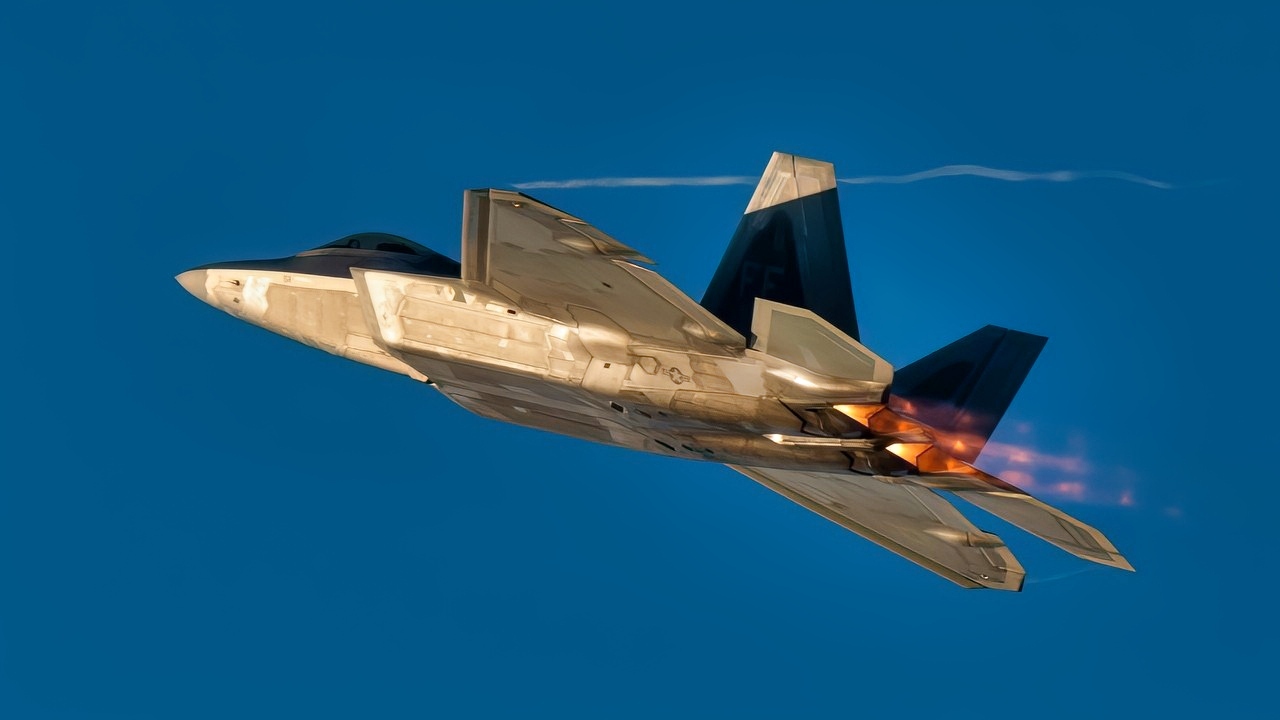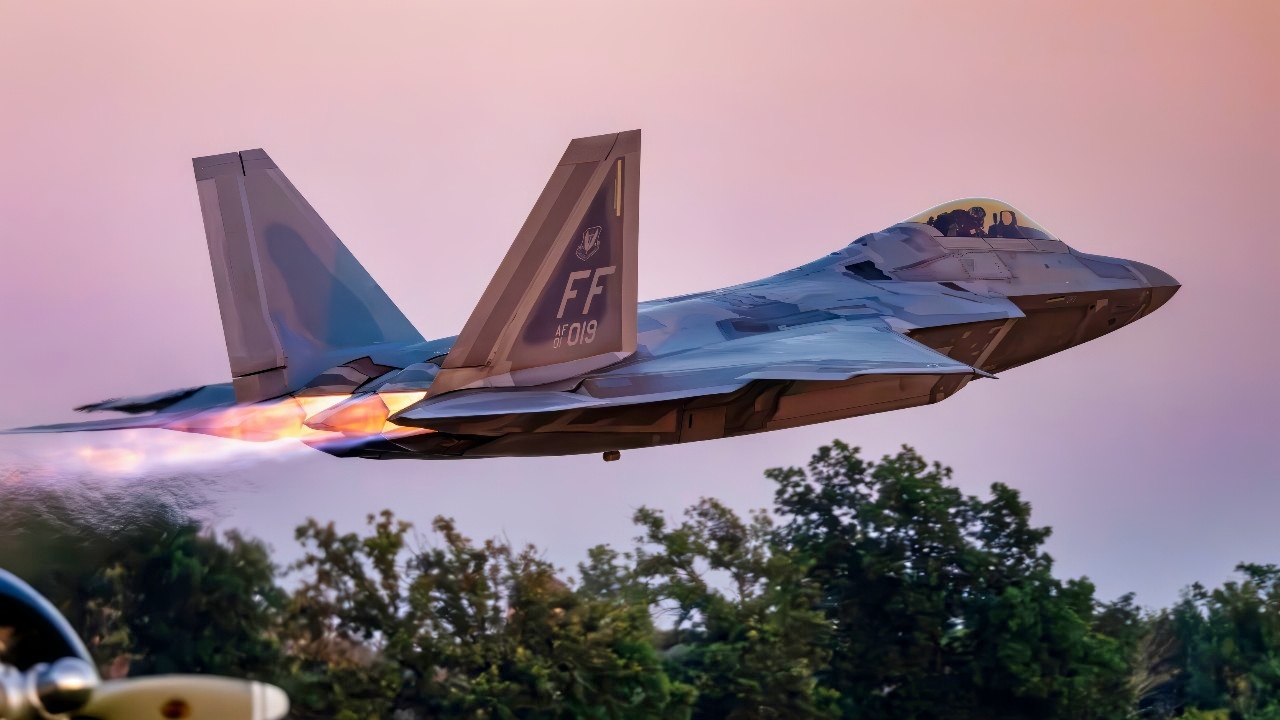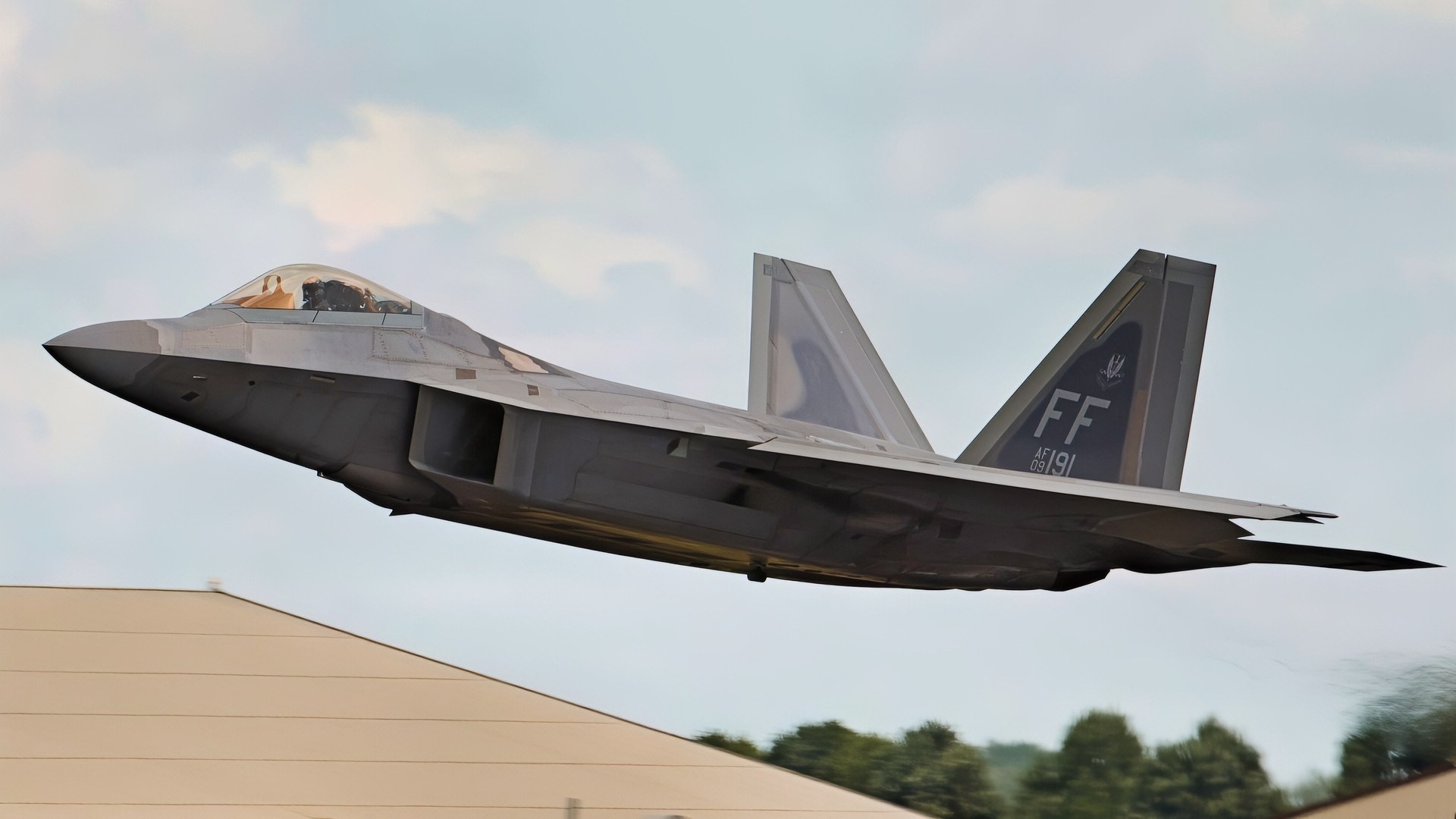Key Points and Summary – The F-22 Raptor still sets the bar for stealth and air-to-air dominance, but it’s no cure-all.
-A maintenance misstep that overheated an auxiliary power bay underscores how complexity and culture can bite.

A U.S. Air Force F-22 Raptor assigned to Joint Base Langley-Eustis, Virginia, takes off during Checkered Flag 23-1 at Tyndall Air Force Base, Florida, Nov. 4, 2022. Checkered Flag is a large-force aerial exercise which fosters readiness and interoperability through the incorporation of 4th and 5th-generation aircraft during air-to-air combat training. The 23-1 iteration of the exercise was held Oct. 31 – Nov. 10, 2022. (U.S. Air Force photo by Tech. Sgt. Betty R. Chevalier)

U.S. Air Force Capt. Nick “Laz” Le Tourneau, pilot and commander of the F-22 Raptor Aerial Demonstration Team, launches an F-22 Raptor during the night show at EAA AirVenture, Oshkosh, Wisconsin, July 26, 2025. The afterburners illuminate the night sky, creating a striking visual as the aircraft accelerates into flight. This takeoff gives spectators a front-row view of the F-22’s power, speed, and advanced capabilities, showcasing the skill of Airmen who operate and maintain the jet. (U.S. Air Force photo by Staff Sgt. Lauren Cobin)
-Its radar-absorbent skin degrades and is expensive to restore, driving high hourly costs.
-Internal bays keep it stealthy yet limit payload, and external stores kill low observability.
-The production line is closed, capping fleet size. Most limiting in an Indo-Pacific fight: range—about 590 nm—forcing reliance on vulnerable tankers.
-NGAD’s F-47 aims past 1,000 nm and adds teaming, a signal that the Raptor’s reign is ending even as it remains elite.
The F-22 Raptor Isn’t Perfect
The F-22 Raptor is one of the stealthiest aircraft currently in service. Though it first flew in the late 1990s, the jet is still without parallel — but it is far from a perfect silver bullet. Here is a look at a few of the Raptor’s shortcomings.
A Jet Aflame
Mechanical complexity, compounded by integrating multiple cutting-edge systems untested by the real-world rigors of combat, is certainly one source of fault or occasional mishap. So too is human error: one investigation found that multiple maintenance errors, exacerbated by a “sloppy maintenance culture,” resulted in damage to one F-22 Raptor.
During that incident, an F-22, assigned to the 422nd Test and Evaluation Squadron at Nellis Air Force Base, and kept in order by the 757th Aircraft Maintenance Squadron, suffered from a number of missed maintenance must-dos, which ultimately resulted in damage to the stealth fighter’s auxiliary power unit exhaust bay. The aircraft in question then overheated.
“On the day of the mishap,” an Air Force investigation found, “the aircraft’s APU Emergency-Off Switch was incorrectly set to “Normal.”” A maintenance member used the APU in order to defuel the aircraft, not recognizing that the APU mixing exhaust duct needed to be installed before the unit could be used.”

F-22 Raptor Fighter. Image Credit: Creative Commons.
“Once the APU was started, hot exhaust gas flowed directly into the exhaust bay rather than being diverted out of the aircraft,” the report details. “With smoke emanating from the exhaust bay, the maintenance member selected the wrong course of action by making an improper attempt to run diagnostics and review fault-reporting codes. This prolonged the duration of the overheat condition. Another maintenance member in the vicinity then shut down the APU manually.”
The Raptor in question was ultimately repairable, though the damage it suffered cost nearly $3,700,000 —an entirely avoidable expense.
Scratchy Skins
The F-22 is, arguably, the world’s most capable air superiority fighter, and potentially the stealthiest single-pilot aircraft in the Air Force of any country. But although that jet is indeed highly regarded for its ability to defeat or otherwise evade enemy radar by nature of its stealth capabilities, that ability is finite and dictated in large part by one of the jet’s consumables: its skin.
What the Raptor’s skin is made up of exactly is naturally inflation not available to the public. But what it does — absorb radar — is known. Multiple coats of the stealth coating are thought to give the jet its unique abilities and must be carefully applied in layers to the aircraft. They must also not alter the jet’s aerodynamics and remain intact despite the rigors of high-G flight.
But the jet’s skin rapidly degrades, as evidenced by multiple photos online. Applying radar-absorbent skin onto the Raptor is one of the jet’s most costly processes, contributing to its estimated $60,000-per-hour flight price tag.
No Occupancy
Compared to some of the Raptor’s older, fourth-generation stablemates, like the F-15 family of aircraft, or the F/A-18 family of Super Hornet navalized fighters, the Raptor’s payload is relatively modest.
A consequence of the jet’s role as a stealthy air superiority fighter is that it does not carry weapons or fuel externally, instead opting to keep air-to-air missiles or other munitions inside a small main weapons bay.
But its payload is modest: the Raptor can accommodate six munitions in its centerline weapon bay, and an additional missile in both of its two small weapon bays along both sides of the fuselage. But the F-22’s wings have two hardpoints each that can accommodate pylons for additional munitions or extra fuel, though mating weapons or jet fuel to the Raptor’s wings greatly degrades its stealth capabilities.
Closed for Business
Perhaps one of the Raptor’s greatest shortcomings, however, relates not to the actual aircraft itself but to its production line: it is a cold, closed line and barring any unforeseen circumstances or an act of God, won’t open again. The Raptor production line closed in 2011-2012. The decision was taken due to the convergence of several factors.
The Raptor was conceived during the Cold War as a radar-evading aircraft that could replace the F-15 and F-16. Galvanized by the Soviet Union’s increasingly capable air defense assets, the impetus for the fighter was lost after the Soviet Union’s collapse. America’s focus following the 9/11 attacks and subsequent Global War on Terror refocused the Pentagon: away from peer conflict with an adversary like Moscow and its Warsaw Pact allies and toward combating non-state terrorists around the globe.
Location, Location, Location
Fast-forward to today, and the United States finds itself once again in an age of competition with near-peers — but not one, instead two. With a revanchist Russia on the march in Ukraine and an increasingly bellicose Chinese presence in the Indo-Pacific, the need for a capable air superiority fighter is higher now than it has been since the Cold War.
But the Raptor doesn’t have the range to rise to the occasion.
A photo shared by the Chief of Staff of the U.S. Air Force earlier this spring on X, formerly Twitter, offered some insight into six of the most important fighter aircraft — both current and upcoming — in the Air Force. One of the most-talked-about aspects of that infographic was the combat radius of the F-47, the air superiority fighter that will replace the Raptor. Listed at 1,000+ nautical miles, the F-47’s range outclassed the Raptor’s 590 nautical mile combat radius handily — as do the F-35A (670 nautical miles) and the F-15E(X) (690 nautical miles).
Though the Raptor can be refueled from the air, as can virtually all other fighter aircraft in the Air Force and other service branches, its reliance on tanker aircraft — and, in contrast, the relative independence from those aircraft the F-47 is projected to have — is an important F-47 logistical consideration.
About the Author: Caleb Larson
Caleb Larson is an American multiformat journalist based in Berlin, Germany. His work covers the intersection of conflict and society, focusing on American foreign policy and European security. He has reported from Germany, Russia, and the United States. Most recently, he covered the war in Ukraine, reporting extensively on the war’s shifting battle lines from Donbas and writing on the war’s civilian and humanitarian toll. Previously, he worked as a Defense Reporter for POLITICO Europe. You can follow his latest work on X.
More Military
Europe’s New 6th Generation GCAP Stealth Fighter Looks Unaffordable
49 ‘New’ M1A1 Abrams Tanks Were Sent to Ukraine by Australia and America Doesn’t Approve
The U.S. Marine Corps Is Facing a Tough Drone Reality
‘300 Percent More Lethal’: The U.S. Army Is Putting China and Russia on Notice










